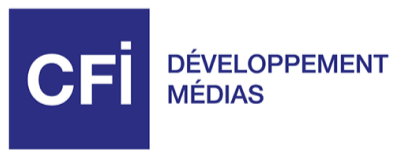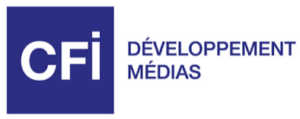City: Tuzla
Date: 15 and 16 September 2025
Venue: Trg slobode
Time: 11:00 – 15:30
Agenda:
DAY 1
11:00 – 11:20 Welcome & Icebreaker
Icebreaker game “Truth or Fake” introduces participants to the theme of disinformation. Participants must choose “true” or “fake,” while journalists explain why people tend to fall for certain claims.
11:20 – 12:05 Discussion: Disinformation in Everyday Life
Experts and young participants discuss how false information spread and impact society. Key concepts: disinformation, misinformation, malinformation.
Examples from Bosnia and Herzegovina and the region are included.
12:05 – 12:15 Coffee break
12:15 – 13:35 Workshop: Spot the Fake
Participants analyze sample posts and headlines, learning how to use verification tools. The workshop has two parts:
- Fake News Hunt
Groups receive a set of articles/posts (a mix of true and false). Task: identify what is credible and explain how they proved it. Groups present their findings followed by a joint discussion.
- “A Photo Never Lies… Or Does It?”
Analysis of manipulated photos and videos (deepfakes, AI-generated content). Participants learn to spot signs of manipulation using tools such as Google Reverse Image Search and InVID. Joint conclusions on how to recognize visual fakes.
13:35 – 13:45 Short Break
13:45 – 14:45 Quiz on Disinformation
Interactive quiz, focusing on fake news detection.
14:45 – 15:30 Break & Networking
Informal exchange with music and refreshments.
DAY 2
11:00 – 11:20 Energizer: “Online Whisper Chain”
Classic whisper game but with added elements of “tweets” and emojis.
The goal: show how information changes and distorts as it spreads.
11:20 – 11:40 Mini Lecture: “The Role of Journalists and Citizens in Fighting Disinformation”
Journalists share their experiences of verifying information. Discussion with participants on what ordinary citizens can do to prevent the spread of disinformation.
11:40 – 12:20 “Twitter Debate – Role Play”
Each group is assigned a role (journalist, bot, politician, citizen, fact-checker). They simulate an online discussion about a fictional event filled with disinformation. Analysis afterwards: Who spread, and who stopped the disinformation?
12:20 – 12:30 Coffee Break
12:30 – 13:20 “Clickbait Creators”
Each group receives a real news story and must write a clickbait headline for it. Then they compare how the perception of the story changes once the headline is altered. Discussion: Why do people trust headlines more than the actual content?
13:20 – 13:30 Short Break
13:30 – 14:30 “Storytelling against Disinformation”
Groups design a mini campaign (poster, meme, reel, or IG story). Theme: How to recognize a fake news story? Each group presents their work.
City: Sarajevo
Date: 18 and 19 September 2025
Venue: Trg oslobođenja
Time: 11:00 – 15:30
Agenda:
DAY 1
11:00 – 11:20 Welcome & Icebreaker
Icebreaker game “Truth or Fake” introduces participants to the theme of disinformation. Participants must choose “true” or “fake,” while journalists explain why people tend to fall for certain claims.
11:20 – 12:05 Discussion: Disinformation in Everyday Life
Experts and young participants discuss how false information spread and impact society. Key concepts: disinformation, misinformation, malinformation.
Examples from Bosnia and Herzegovina and the region are included.
12:05 – 12:15 Coffee break
12:15 – 13:35 Workshop: Spot the Fake
Participants analyze sample posts and headlines, learning how to use verification tools. The workshop has two parts:
- Fake News Hunt
Groups receive a set of articles/posts (a mix of true and false). Task: identify what is credible and explain how they proved it. Groups present their findings followed by a joint discussion.
- “A Photo Never Lies… Or Does It?”
Analysis of manipulated photos and videos (deepfakes, AI-generated content). Participants learn to spot signs of manipulation using tools such as Google Reverse Image Search and InVID. Joint conclusions on how to recognize visual fakes.
13:35 – 13:45 Short Break
13:45 – 14:45 Quiz on Disinformation
Interactive quiz, focusing on fake news detection.
14:45 – 15:30 Break & Networking
Informal exchange with music and refreshments.
DAY 2
11:00 – 11:20 Energizer: “Online Whisper Chain”
Classic whisper game but with added elements of “tweets” and emojis.
The goal: show how information changes and distorts as it spreads.
11:20 – 11:40 Mini Lecture: “The Role of Journalists and Citizens in Fighting Disinformation”
Journalists share their experiences of verifying information. Discussion with participants on what ordinary citizens can do to prevent the spread of disinformation.
11:40 – 12:20 “Twitter Debate – Role Play”
Each group is assigned a role (journalist, bot, politician, citizen, fact-checker). They simulate an online discussion about a fictional event filled with disinformation. Analysis afterwards: Who spread, and who stopped the disinformation?
12:20 – 12:30 Coffee Break
12:30 – 13:20 “Clickbait Creators”
Each group receives a real news story and must write a clickbait headline for it. Then they compare how the perception of the story changes once the headline is altered. Discussion: Why do people trust headlines more than the actual content?
13:20 – 13:30 Short Break
13:30 – 14:30 “Storytelling against Disinformation”
Groups design a mini campaign (poster, meme, reel, or IG story). Theme: How to recognize a fake news story? Each group presents their work.
City: Mostar
Date: 22 and 23 September 2025
Venue: Courtyard of the French Institute in BiH – Branch in Mostar [Kneza Mihajla Viševića Humskog 57]
Time: 11:00 – 15:30
Agenda:
DAY 1
11:00 – 11:20 Welcome & Icebreaker
Icebreaker game “Truth or Fake” introduces participants to the theme of disinformation. Participants must choose “true” or “fake,” while journalists explain why people tend to fall for certain claims.
11:20 – 12:05 Discussion: Disinformation in Everyday Life
Experts and young participants discuss how false information spread and impact society. Key concepts: disinformation, misinformation, malinformation.
Examples from Bosnia and Herzegovina and the region are included.
12:05 – 12:15 Coffee break
12:15 – 13:35 Workshop: Spot the Fake
Participants analyze sample posts and headlines, learning how to use verification tools. The workshop has two parts:
- Fake News Hunt
Groups receive a set of articles/posts (a mix of true and false). Task: identify what is credible and explain how they proved it. Groups present their findings followed by a joint discussion.
- “A Photo Never Lies… Or Does It?”
Analysis of manipulated photos and videos (deepfakes, AI-generated content). Participants learn to spot signs of manipulation using tools such as Google Reverse Image Search and InVID. Joint conclusions on how to recognize visual fakes.
13:35 – 13:45 Short Break
13:45 – 14:45 Quiz on Disinformation
Interactive quiz, focusing on fake news detection.
14:45 – 15:30 Break & Networking
Informal exchange with music and refreshments.
DAY 2
11:00 – 11:20 Energizer: “Online Whisper Chain”
Classic whisper game but with added elements of “tweets” and emojis.
The goal: show how information changes and distorts as it spreads.
11:20 – 11:40 Mini Lecture: “The Role of Journalists and Citizens in Fighting Disinformation”
Journalists share their experiences of verifying information. Discussion with participants on what ordinary citizens can do to prevent the spread of disinformation.
11:40 – 12:20 “Twitter Debate – Role Play”
Each group is assigned a role (journalist, bot, politician, citizen, fact-checker). They simulate an online discussion about a fictional event filled with disinformation. Analysis afterwards: Who spread, and who stopped the disinformation?
12:20 – 12:30 Coffee Break
12:30 – 13:20 “Clickbait Creators”
Each group receives a real news story and must write a clickbait headline for it. Then they compare how the perception of the story changes once the headline is altered. Discussion: Why do people trust headlines more than the actual content?
13:20 – 13:30 Short Break
13:30 – 14:30 “Storytelling against Disinformation”
Groups design a mini campaign (poster, meme, reel, or IG story). Theme: How to recognize a fake news story? Each group presents their work.



